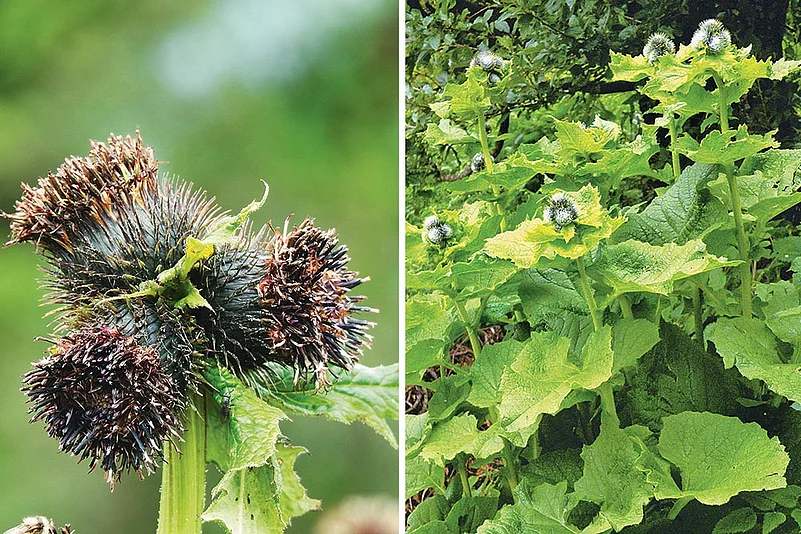The state of Uttarakhand was constituted as a separate state from the erstwhile mountains and foothills area of Uttar Pradesh in 2000. Since the constitution of a separate state, pilgrimage, hydropower and medicinal and aromatic plants (MAPs) have been considered key activities and renewable resources for regional economic development and improving the socio-economic status of native communities. The tradition of sustaining livelihood via utilising indigenous MAP resources in this mountain region is an age-old practice.
Around the early 19th century, exchanging daily needs commodities with MAPs through a barter system was common. In the 1950s, harvesting of MAP growing in this region was permitted officially, and in 1960, two herbal pharmaceutical companies; Indian Medicines and Pharmaceuticals Limited (IMPCL), Mohan, Ramnagar and Cooperative Drug Factory (CDF), Ranikhet, were established. Subsequently, in hill districts of former Uttar Pradesh (now Uttarakhand), the establishment of Bheshaj Kray Vikray Sahkari Sangh (or Jila Bheshaj Sahkari Sangh Limited) for participatory harvesting of MAPs from the natural habitats was initiated during 1970. Due to over-harvesting and inadequate regeneration, many Himalayan MAPs faced threats to survival. Thus, after the 1990s, conservation, sustainable utilisation and cultivation of MAPs received attention.
However, innovative cultivation of wild medicinal Alliums (Allium caroliniaum, A. humile and A. stracheyi), Caraway (Carum carvi), Costus (Saussrea costus syn. Aucklandia costus) and Pleurospermum angelicoides (Chhippi) is almost a century old practice in the cold desert and temperate areas of Chamoli and Pithoragarh district of Uttarakhand.

In recent decades, cultivation of Aconite (Aconitum heterophyllum) and Kutki (Picrorhiza kurroa) has become a success story in the Uttarkashi, Chamoli, Rudraprayag and Bageshwar districts of Uttarakhand. After, the creation of Uttarakhand, Kutki is among the medicinal herb, which is the favoured optional cash crop choice of mountain farmers, for combating damage to the agriculture field due to wild animals. It is estimated that annually, 15 to 20 metric tonnes (MT) of Kutki is produced in different districts of Uttarakhand, and on an individual basis, an average farmer may earn nearly Rs 50,000–60,000 per annum.
Innovative cultivation of Costus in the border districts of Uttarakhand was started before 1930s, but faced the setback during 1960s, due to problems in trade with China, through high-altitude trade passes. Hitherto, this practice has been revived and on an average basis, annually, about 10 to 15 MT Costus is produced in Uttarakhand. The mid-hill areas in some districts of Uttarakhand, like Almora, Pithoragarh, Bageshwar, Champwat and Nainital are major producers of Tejpatta or Bay Leaf (Cinnamomum tamala) and annually 180 to 200 MT Bay Leaves are marketed from Uttarakhand.

Facilitation from government agencies and farmer-to-farmer interaction has promoted hundreds of farmers for the cultivation of Rare, Endangered and Threatened (RET) and other MAPs.
26 MAPs, including some listed in the Convention on International Trade in Endangered Species of Wild Fauna and Flora (CITES) and RET and exotic aromatic species have been prioritised by the government for mass-scale cultivation in different agro-climatic zones of the state. Distribution of free planting material of prioritised species is a useful initiative of the government. Registration of MAP growers, simplification in transit-pass rules (permission for transporting cultivated herbal produce within the country) and development of procedure for exporting cultivated CITES and RET species, viz. issuing Legal Production Certificate (LPC), have helped in promoting the MAPs sector in Uttarakhand.
Possibly Uttarakhand is among the pioneer mountain states of the country, where the MAPs growers are registered through a prescribed format. This helps in maintaining the database of MAPs growers; also, the registration process is useful in checking illegal harvesting of threatened species from natural habitats. In Uttarakhand the transit pass for cultivated herbal produce is issued by the Herbal Research and Development Institute (HRDI), and HRDI has authorised the Herbal Development Unit (Bheshaj Vikas Ikai). LPC is issued at the request of the importer and after the recommendation of HRDI, the concerned divisional office of the Department of Forest issues the LPC according to the provisions of the Indian Forest Act.
The Conservation, Development and Harvesting (CDH) initiative is one of the practical plans of the Uttarakhand government. As per the CDH plan, nearly 37 species of RET MAPs, including Ashthvarga plants, are prohibited for harvesting from natural habitats, 28 MAPs are categorised for sustainable harvesting and 21 species growing in abundance are permitted for harvesting without any restriction. Prohibiting the collection of RET species is not only helping in situ conservation of such species; but it is also encouraging their cultivation. Permitted harvesting of some MAPs has importance in sustaining the economy of rural communities and also, auction-based marketing of harvested materials through the collection centres (mandis), operated by Forest Development Corporation (FDC), a sister organisation of the Department of Forest, Uttarakhand, helps in generating revenue.
Highlands areas of Uttarakhand are esteemed for non-material, both spiritual and religious benefits, and Himalayan herbs. MAPs of the Himalayas are known to have high curing potential; also, Himalayan herbs are described as low-volume, high-value medicinal plants. This is because the Himalayan MAPs grow in harsh environmental conditions and a variety of secondary metabolites or medicinally have useful bio active compounds, including alkaloids, steroids, glucosides and many more are synthesised by these plants. It is interesting to note that earlier the MAPs grew as wild and are now adopted as optional cash crops, merely changing their properties.
Field experiences on the cultivation of some MAPs have indicated that this practice is helping in obtaining higher production and the chances of adulteration or illegal harvesting from the wild are reduced.
Development of a species-specific value chain, including minimising loss in harvesting and transport, effective Post Harvest Management (PHM), strengthening the crude herbs retail market and adopting an additional number of MAPs for cultivation and enhancing production seem to be needed for effective growth of MAPs sector in the Uttarakhand.
Abhinav Shah (IAS) is the Director, and Dr Chandra Prakash Kuniyal is a scientist at the Herbal Research and Development Institute (HRDI)
















